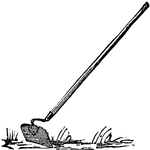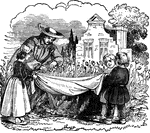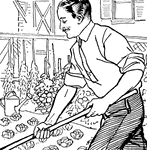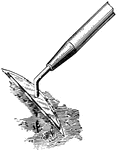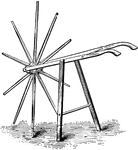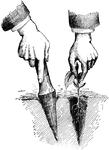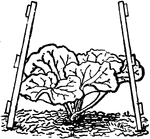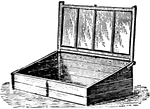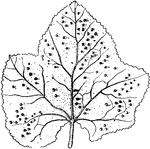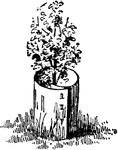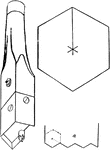
Flower Gatherer
"Selby's Flower Gatherer which cuts and holds the flower at the same time." — Encyclopedia Britannica,…
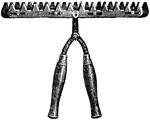
Hedge-Cutter
"A new instrument for clipping hedges, Ridgeway's hedge-cutter, does its work quickly and well; and…
Sulphurator
"Sulphurators are instruments for distributing flowers of sulphur, for the purpose of destroying mildew.…

Epps's Sulphurator
"Sulphurators are instruments for distributing flowers of sulphur, for the purpose of destroying mildew.…
Suckering Iron
"Root suckers are young shoots from the roots of plants, chiefly woody plants, as may often be seenin…

Yucca
"A plant may be operated on wherever the stem has become firm and woody; the top will not fail to make…
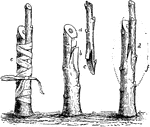
Whip-Grafting
"Whip-grafting or tongue-grafting is the most usual mode of performing the operation. The stock is headed…

Cleft-Grafting
"Cleft-grafting is another method in common use. The stock a is cleft down from the horizontal cut d,…
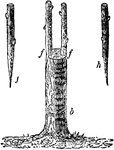
Crown-Grafting
"Crown-grafting is preferable to cleft-grafting, inasmuch as it leaves no open spaces in the wood. The…

Root-Grafting
"Fahlias and paeonies may be grafted by inserting young shoots into the neck of one of the fleshy roots…

Root-Grafting
"In the case of large woody plants thus worked the grafted roots, after the operation is completed,…

Shield-Budding
"The simplest and most generally practised form of budding is that called Shield budding or T-budding.…

Cutting Pot
"A special contrivance for a cutting pot was brought into notice many years ago by Mr. A. Forsyth. A…
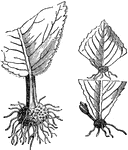
Leaf Cuttings
"Many plans may be propagated by planting their leaves or portions of their leaves as cuttings, as,…
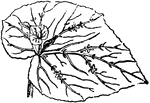
Leaf Cuttings
"Many plans may be propagated by planting their leaves or portions of their leaves as cuttings, as,…

Single Eye
"This mode of propagation is performed by cutting the branches into short lengths, each containing one…

